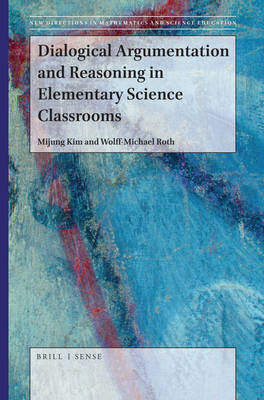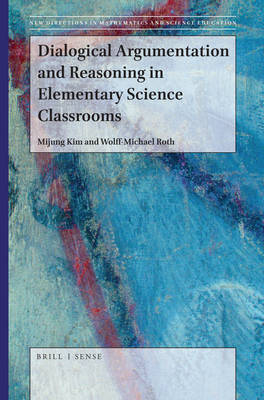
- Afhalen na 1 uur in een winkel met voorraad
- Gratis thuislevering in België vanaf € 30
- Ruim aanbod met 7 miljoen producten
- Afhalen na 1 uur in een winkel met voorraad
- Gratis thuislevering in België vanaf € 30
- Ruim aanbod met 7 miljoen producten
Zoeken
Dialogical Argumentation and Reasoning in Elementary Science Classrooms
Mijung Kim, Wolff-Michael Roth
€ 181,95
+ 363 punten
Uitvoering
Omschrijving
Science educators have come to recognize children's reasoning and problem solving skills as crucial ingredients of scientific literacy. As a consequence, there has been a concurrent, widespread emphasis on argumentation as a way of developing critical and creative minds. Argumentation has been of increasing interest in science education as a means of actively involving students in science and, thereby, as a means of promoting their learning, reasoning, and problem solving. Many approaches to teaching argumentation place primacy on teaching the structure of the argumentative genre prior to and at the beginning of participating in argumentation. Such an approach, however, is unlikely to succeed because to meaningfully learn the structure (grammar) of argumentation, one already needs to be competent in argumentation. This book offers a different approach to children's argumentation and reasoning based on dialogical relations, as the origin of internal dialogue (inner speech) and higher psychological functions. In this approach, argumentation first exists as dialogical relation, for participants who are in a dialogical relation with others, and who employ argumentation for the purpose of the dialogical relation. With the multimodality of dialogue, this approach expands argumentation into another level of physicality of thinking, reasoning, and problem solving in classrooms. By using empirical data from elementary classrooms, this book explains how argumentation emerges and develops in and from classroom interactions by focusing on thinking and reasoning through/in relations with others and the learning environment.
Specificaties
Betrokkenen
- Auteur(s):
- Uitgeverij:
Inhoud
- Aantal bladzijden:
- 150
- Taal:
- Engels
- Reeks:
- Reeksnummer:
- nr. 34
Eigenschappen
- Productcode (EAN):
- 9789004392564
- Verschijningsdatum:
- 25/10/2018
- Uitvoering:
- Hardcover
- Formaat:
- Genaaid
- Afmetingen:
- 160 mm x 236 mm
- Gewicht:
- 358 g

Alleen bij Standaard Boekhandel
+ 363 punten op je klantenkaart van Standaard Boekhandel
Beoordelingen
We publiceren alleen reviews die voldoen aan de voorwaarden voor reviews. Bekijk onze voorwaarden voor reviews.












